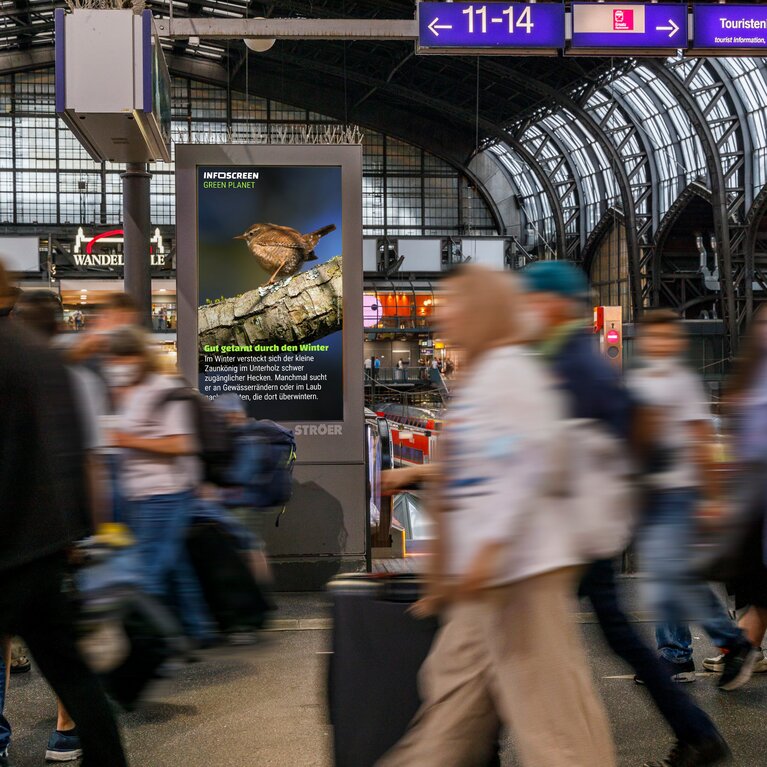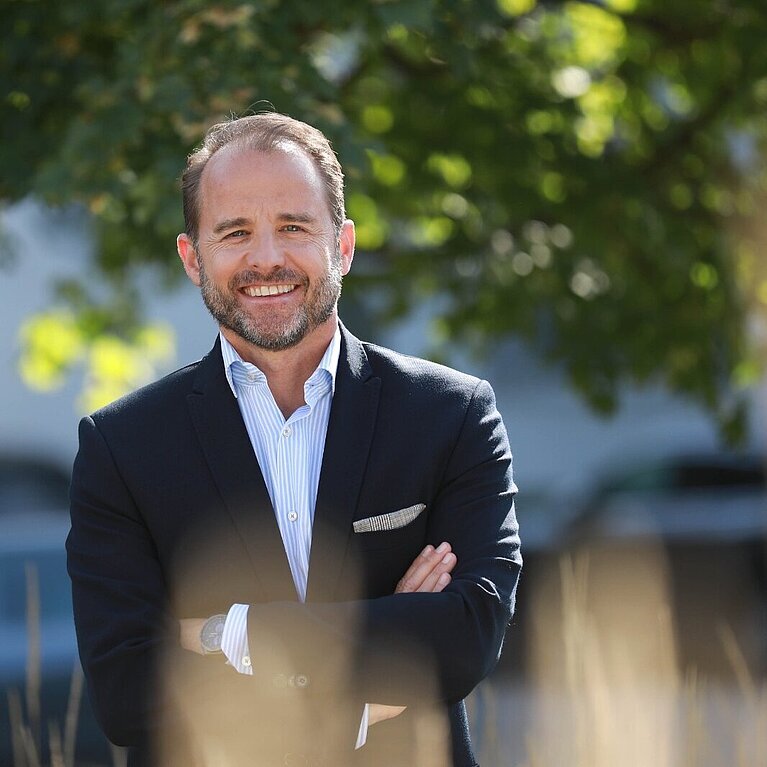
TEN-SECOND MOVIES

OLIVER HERWIG: Why are you an mcbw partner?
ALEXANDER STOTZ: Because we accept responsibility for the public space that we help to shape. Our goal is to align our design to reflect the city and the architecture where it is located, but also the wishes of the people that live there.
OH: So design is part of your process from the outset?
AS: Yes, because we are privileged to occupy valuable space in public places. With this in mind, we align our street furniture closely to its environments. We have always commissioned public transit shelters in modern designs by Hadi Teherani and many others, because design needs to be unobtrusive, if only because of its repeated presence.
OH: Does that apply to the content, too?
AS: Posters are still the basis of everything we do. When static images succeed in compressing information into the dimensions of a poster and inspiring images in the minds of the viewers, they express the supreme art of creativity.
OH: You provide advertising for around 1800 public transit shelters in Munich alone. Many moving images are pretty conspicuous.
AS: Moving images are all about persuasion. We launched digital out-of-home advertising in Munich twenty years ago, as global pioneers in the field. Nobody wanted the city to become a Las Vegas, and we were wise to wait for a while before introducing digital advertising to the streets. Only the technologies we now have today can comply with heritage protection requirements and integrate appropriately into their environment. The “bright lights” are no longer so bright, which is also good for energy efficiency.

OH: On that subject, how do the carbon footprints of, say, posters and screens compare?
AS: Let’s take the example of a poster lightbox in 9-m² format. It has a carbon footprint of around 55 grams of CO2 per 1000 contacts, which is very good. Cost per thousand, or cost per mille, is the standard unit of calculation in the advertising industry. So a daily newspaper has the highest carbon footprint, with over 9000 grams. Online advertising has emissions ranging from 13 to 284 grams of CO2, depending on the format. TV has 828 grams of CO2, but radio has only 69 grams. And digital out-of-home advertising operated on green electricity has a carbon footprint per thousand contacts of just 5 to 6 grams of CO2.
OH: How does that work?
AS: It works because we’re not a broadcasting station, but we have many, many contacts – 400,000 contacts per day at Munich’s central railway station, for example. This optimizes the energy efficiency per contact. In addition, we spent five years developing our own energy reduction methods, and succeeded in significantly cutting our consumption.
Alexander Stotz, CEO Ströer Media
OH: And you did this by …
AS: ... working on the ion control software that selects the colors in the advertisements. White uses the most power, up to the max. It took many, many small steps to achieve this energy saving. We also use green energy.
OH: What does sustainability mean to you?
AS: We celebrated our centenary last year. So our business model is pretty sustainable. We were already seeking to maximize our screens’ lifespan and proportion of recycled material years ago. The 2023 GreenTech Festival saw the debut of our new bus shelters, which filter particulates from the air, can absorb around 50 liters of rainwater, and create little oases of nature in heavily built-up areas. 40,000 bus and train shelters and advertising pillars can be greened. We have already started the process in Munich.
OH: Is there more that can be done?
AS: Sure. We install solar panels on the roofs to provide 100 percent of the power needed. And we collect driftwood from the Baltic Sea to use for the seating; there’s a small factory that manufactures it.
OH: So transit shelters become energy-autonomous?
AS: Or preferably, generate more than they need, so people can charge their phones or e-scooters wirelessly. We need to constantly be on the look-out for new connections. Sustainability primarily focuses on ecology, but it also involves social aspects. We aim to become a communication platform that can serve others. To this end, we provide a host of NGOs with their own sustainability window in our program, to inspire people to join in.
OH: Are smartphones in competition with your advertising, or are they opening new doors?
AS: Both. There’s certainly plenty of competition for attention, particularly in the metro – or the subway, if you prefer. But passengers waiting for a train are grateful for the distraction. Alongside classic out-of-home advertising, we are also Germany’s largest online marketing company, so we are closely bound up with the development of the medium.
OH: Visual behaviors are changing.
AS: It’s a generational thing. Five years ago, we might have been asked whether ten seconds weren’t rather short. But look at Instagram today, and ten seconds suddenly seem like a whole movie. We have to be far quicker at capturing viewers’ full attention, especially where young people are concerned, otherwise they’ve already gone on to the next film.
OH: What about digitalization of public spaces? Are we moving in the direction of a virtual world?
AS: Screens can connect the digital and the real world. And those connections are what counts. Advertisers are moving away from classic product campaigns and addressing topics of social relevance. When that happens in real time, we experience a new dimension of communication that makes the company and its values more accessible. That goes for products and services, but also for recruiting.
OH: Does artificial intelligence (AI) already play a role in your work?
AS: Yes, a big role where it comes to generating neighborhood content – in other words, scanning the Internet. AI eases the workload of people engaged in creativity. And it checks content for, say, religious or political extremism or propaganda.
OH: That could be pretty sensitive. What does the future have in store for us? Will advertisements address us directly by name?
AS: No, but things will become increasingly localized. For example, the restaurant on the corner could book a screen on Tuesdays and Thursdays from 10 to 12 to advertise its lunch specials, and quickly take the ad down when it’s sold out. That’s very efficient, including cost-wise. And creative YouTubers can naturally also use the neighborhood in the same way.
LOOK AT INSTAGRAM AND TEN SECONDS SUDDENLY SEEM LIKE A WHOLE MOVIE
OH: And in five years’ time?
AS: Probably half of all media will be digital. I can imagine that in ten years there will only be digital media because by that time, transreflecting displays will have reached acceptable image quality. They only need energy when they switch images, so that they offer continuous communication in real time.
